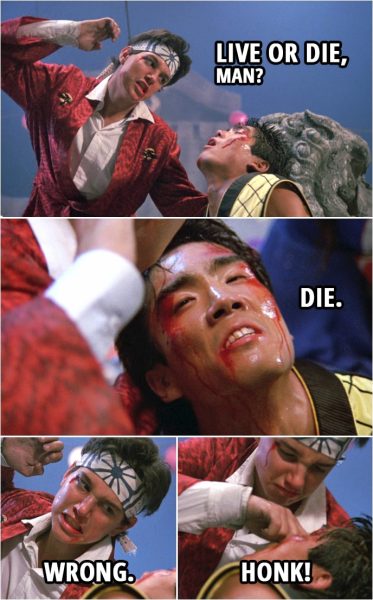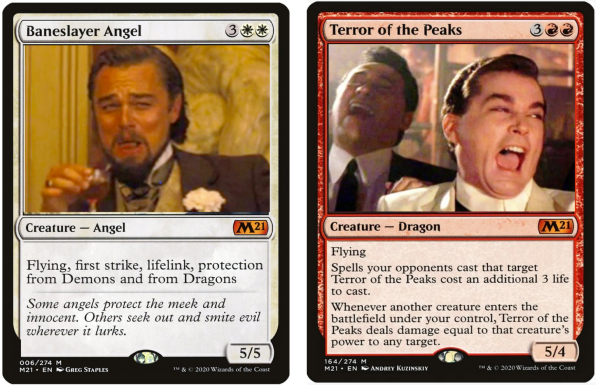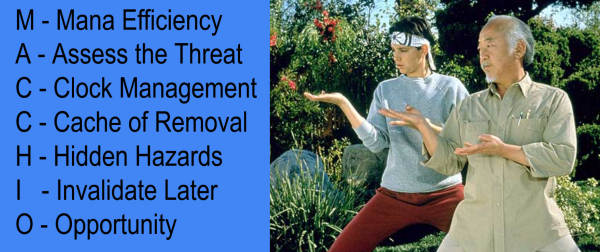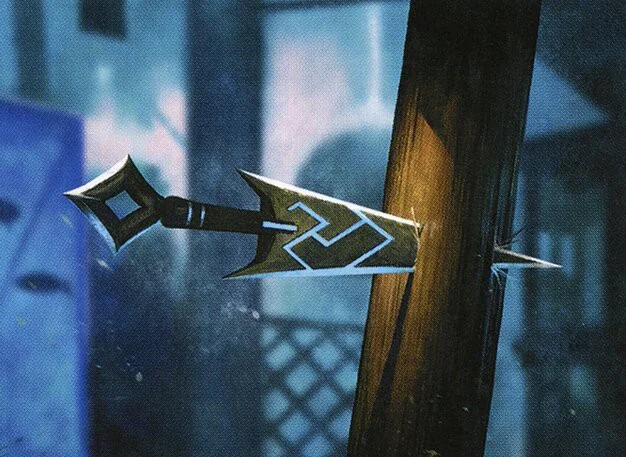Are you a Quiet Speculation member?
If not, now is a perfect time to join up! Our powerful tools, breaking-news analysis, and exclusive Discord channel will make sure you stay up to date and ahead of the curve.
In The Karate Kid Part II, Chozen Toguchi challenges Daniel LaRusso (played by Ralph Macchio) to an impromptu battle to the death. As O-Bon festival-goers watch in awe, our protagonist defeats his rival with decisive finality. While holding his opponent's life in his hands, Ralph Macchio utters four words that have come to define the titular character.
No. Not "wax on, wax off."

A despondent Chozen chooses death. However, the choice was never truly his. Ralph responds by shouting "wrong" in his face, honking his nose like an overzealous uncle, and dropping his limp foe to the ground as he embraces a moral, and very literal, victory.
In games of Magic the Gathering we face similar decisions. Creatures threaten to determine the outcome of each game, and we must decide if and when to use removal. Do we destroy it? Or do we let it live and preserve these precious spells? When making this critical decision, using the MACCHIO Method can help us land on the optimal choice. What's the MACCHIO Method? It's a heuristic to help determine when to cast our removal spells, and what to target with them. The acronym MACCHIO breaks down as follows:
- M - Mana Efficiency
- A - Assess the Threat
- C - Clock Management
- C - Cache of Removal
- H - Hidden Hazards
- I - Invalidate Later
- O - Opportunity
Let's look at each of these in-depth.
M - Mana Efficiency
A critical piece of evaluating removal is efficiency. We rarely want to use our whole turn answering a threat, though sometimes it's unavoidable. While it can be tempting to immediately answer a threat, if it costs us our entire turn, are we really getting ahead? We should sequence our spells to maximize efficiency. That may mean answering a threat on a future turn to develop our plan in the present turn.
Conversely, I will fire off a removal spell on a smaller threat if it helps smooth out my curve. On the draw, I'm salivating over an opportunity to shock my opponent's two-drop during their end step with little consideration to its potency. Maximizing your mana efficiency is a strong incentive to make a play. A more critical juncture, however, can come later in games.
If we plan on casting expensive spells over two turns, we may not have the luxury of holding a removal spell. Often times we wait too long, losing the presumed flexibility as our dwindling life total constricts our options. We need to maximize the use of our mana to get the most out of our lands.
A - Assess the Threat
What happens if we don't answer this threat? In games of Magic, as in life, when problems aren't answered they often get worse. A creature like Talrand, Sky Summoner or Blood Artist will do more damage the longer they stick around. Because these creatures generate value, we are incentivized to answer them quickly. While leaving them around for a single turn might be okay, the situation becomes more precarious the longer they stay on board.
The same can be said for unchecked attackers. Kruin Striker isn't an early pick in Draft, however, the damage that it presents can alter our time frame. On turn six, this card probably isn't a threat. On turn two, it might represent six to eight damage before you're able to set up a "profitable answer."
Nothing happens in a vacuum. Context is essential to assessing any threat. Consider how each card is going to impact the game before defaulting to using a removal spell.
C - Clock Management
The clock represents how many turns you anticipate before the game ends. As the game progresses you want to consider your strategy and your opponent's. How many turns is it going to take for your opponent to win and how many turns will it take you? The slower the clock, the less definite it is, as it allows players to access more of their resources.
For this reason, an aggressive deck might need to use a Cast Down on a Wall of Omens. The defending player already got their value off of the wall, however, the longer that card stays in play, the longer it soaks up damage. As an aggressive player, I want to accelerate the clock and reduce my opponent's draw steps. Using removal to push damage can be a winning strategy when I'm reliant on shortening the clock. The opposite can be true for a more controlling player. This is why you might see a Cast Down targeting a freshly cast Kruin Striker during an opponent's end step.
In racing situations, this becomes even more important. When racing, life total becomes the most important resource. For this reason, an oft-ignored Steadfast Paladin might become the target of a Grim Bounty. Additionally, if we know the race favors us, we may want to wait for an opponent to use a clock-altering pump spell before firing off an instant-speed answer.
C - Cache of Removal
This comes down to scarcity, but unfortunately, there is no "s" in Macchio.
The less removal you have in your deck, the more you want to consider other alternatives. Last week we discussed how combat tricks can serve as de facto removal spells. If I'm limited to one band together and a portable hole as my removal spells, I'm going to be judicious with them. I'm saving them for critical threats and critical moments.
H - Hidden Hazards
Live footage of my opponent's hand after I Doom Blade their Basri's Acolyte:

It's a tale as old as Time Walk. After some deliberation, I play my removal spell on my opponent's creature. They untap and slam an even bigger threat and I have no way of dealing with it. This is the nightmare scenario. It happens.
We can rarely afford to play around mythics and rares, but we want to be cognizant of this possibility. The best we can do is enact our game plan and play around what we can reasonably afford to play around. If we know our opponent is dead unless they have one of these cards, we have to ask ourselves why they haven't played it yet. It's good for us to leverage our advantages when we can, but hiding our removal until we see an absolute bomb is going to cause more problems than it will solve.
Post-sideboard, we might know about the presence of one of these creatures. That changes the calculus, but we don't want to devalue a card in our hand because of a card in an opponent's deck. If we're so far ahead that a bomb of this caliber is the only way we lose, then hold the removal. Don't play scared, but be aware.
I - Invalidate Later
Powering Down the Opponent
Sometimes we can save removal because playing out the cards in our hand will lessen or invalidate a threat. Occasionally this will be an effect that neutralizes the threat. Earlier I brought up the Kruin Striker. Unchecked, a two-drop can really do some damage. However, if we know that we have something like a Skeleton Archer in hand, we don't need to worry about it. Additionally, if we can deploy a blocker with high toughness or first strike, it's going to keep the striker at bay.
The most common way to invalidate creatures is sizing, which a fastidious player will note for sideboarding. If our opponent has 2/2s and we're holding a 2/3, we have a huge advantage. Combat favors the blocker and a single Tolarian Scholar can dissuade a slew of Grizzly Bears.
If we can neutralize a threat without expending a resource, we can save removal for more troublesome creatures.
O - Opportunity
Timing matters.
If my opponent has a threat that I know I have to remove, I want to use my removal spell when they have less mana to protect it. Playing around a Ranger's Guile or Negate can be the difference between winning and losing.
However, more nuanced is the battle between removal (especially damage-based removal) and pump spells. Fortunately, these are situations we can set up. If an opponent hints at a pump spell, usually by making a strange attack, we can use that information against them later. Similarly, if our opponent relies on a fight spell to remove a threat, interrupting their removal with your own can be a game-deciding play.

Consideration and Context
There are no universal rules for deciding when we should take certain actions. Each game has different situations and circumstances. Each deck has its own plan and tools for executing that plan. To better prepare for these situations, we want to reduce the relevant information down to meaningful variables.
These seven variables will help us maximize the impact of our removal in Limited, determining when our opponents' creatures should live or die. By paying close attention to them, we can start winning tournaments like Daniel LaRusso.




